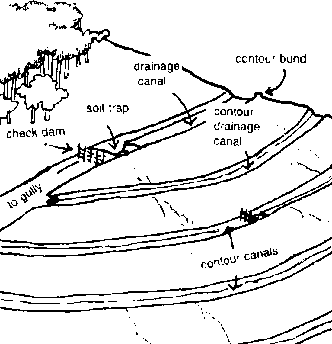5.7. Soil Management
Soil management is not a single and straight process. It concerns all operations, practices that are used to maintain the quality of soil. If soil erosion and exhaustion are caused by humans; by corollary, they can also be prevented by humans. Soil erosion is essentially aggravated by faulty practices. For instance, recommended ratio of nitrogen, phosphorus and potassium (NPK) fertilizer in India is 4:2:1 but actual usage is in the ration of 10:4:1. Lands with a slope gradient of 15 - 25 per cent should not be used for cultivation. If at all the land is to be used for agriculture, terraces should carefully be made.
Over-grazing and shifting cultivation are other major faulty practices. It should be regulated and controlled by villagers collectively. Contour bunding, Contour terracing, check dams, regulated forestry, cover cropping, mixed farming and crop rotation are some other sustainable methods to manage soil quality. In arid and semi-arid areas, shelter belts or green belts should be constructed around the cultivable land to protect them from progressive sand dunes.


